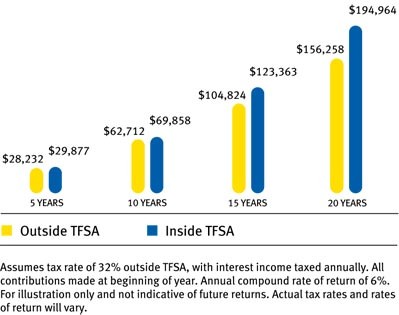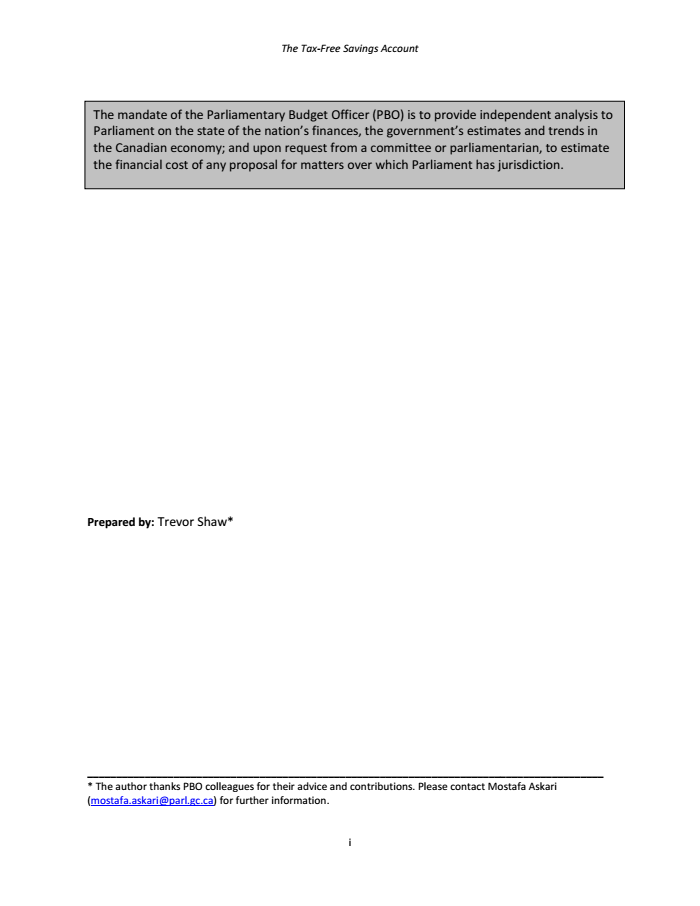TFSA Tax Free Savings Account Strategies
Post on: 12 Июнь, 2015 No Comment

Im trying to think of some various strategies for using the TFSA:
1. If you have a non-registered account with corporate class mutual funds and they have a t-class available for ROC distributions, you could elect to start the ROC withdrawals and slowly convert the portfolio into the TFSA account. Eventually your ACB will be ground down to zero in the non-registered account, but you will also be transferring to a tax-sheltered environment without having to pay the higher fee associated with corporate class funds.
2. There is a huge opportunity for estate planning as you can pass TFSA assets tax-free to your spouse, and then to your children. Assuming the children will be building up unused room then might even have the means to accept the transfer right into a TFSA of their own.
3. You can maximize your RRSP and put the refund into the TFSA.
4. You can contribute to an RRSP in a high-income year and make a withdrawal in a low income year (capitalizing on the differential between tax rates) and then place the withdrawal in your TFSA.
5. I can see the TFSA being the savings vehicle of choice for low-bracket Canadians retirement, and the RRSP might be used for pre-retirement expenses (if the TFSA gets maximized).
6. The TFSA might replace standard savings accounts for the younger generations since many will probably not be able to keep up with the contribution room generated.
7. The TFSA will be very helpful to single income families since they will still have $10,000 in room generated per couple, all of which can be used up by the income earner.
8. A non-resident can maintain a TFSA. No new contribution room is generated so long as they are non-resident, but the account remains tax-sheltered. They can not make new contributions as well (even if they had unused room).
9. If you use both an RRSP and a TFSA, it might make sense to put the equities in your TFSA since if they are expected to grow faster than fixed income investments over a long period of time and the withdrawal of funds will not be taxed, this will be advantageous at time of withdrawal.

So for example, if you put $1,000 into each of the RRSP and TFSA account and lets assume a 40% tax bracket now and 30 years from now, then we also need to factor re-investment of the $400 RRSP refund. Lets assume it goes back to the RRSP for a total RRSP contribution of $1,400. The $1,400 RRSP amount is fixed income and grows at 5% for 30 years. That grows to $6,050.72. The $1,000 TFSA in in equities and grows at 10%, and after 30 years is worth $17,449.40. If you took out all money, you would have no tax on the TFSA withdrawal, and $2,420.29 in tax on the RRSP withdrawal for a net after-tax amount of $21,079.83.
If it was the other way around, then you would have $1,000 in the TFSA earning 5% as fixed income being worth $4,321.94 in 30 years. The $1,400 RRSP contribution would have grown to $24,429.16 at 10% over 30 years. The TFSA withdrawal is still tax free, but the RRSP withdrawal at 40% tax would leave you with $14,657.49 which when added to $4,321.94 would leave you with a grand after tax total of $18,979.44. This is $2,100.39 in savings. Therefore, so long as you dont violate your overall asset allocation, it makes sense to put as much of the equities into the TFSA as possible and as much of the fixed income in the RRSP as possible. Extrapolate this out for contributions over 30 years and the difference might add up to $30,000 in savings.
Subscribe to the free Email Updates to learn more about personal finance.
If you like this blog, you might like my book:
RRSPs: The Definitive Book on Registered Retirement Savings Plans














